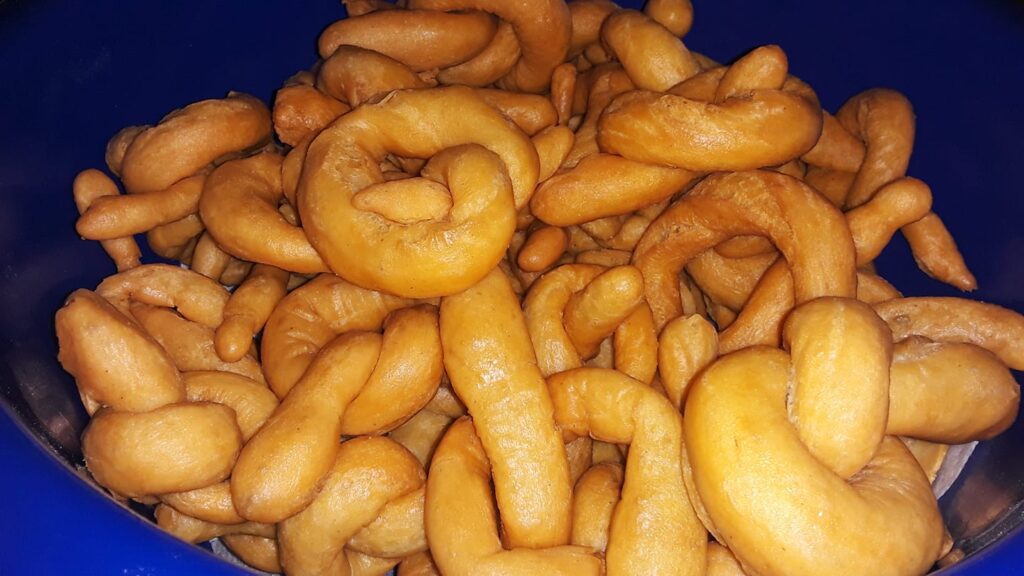Like in many other countries of Europe, goblins (kalikantzari) chose the days of Christmas to make their scary and messy appearance! It is believed that they always come into the houses from the 25th of December till the 6th of January (when the Holy Spirit sanctifies the waters and sends them away). These hairy little creatures want to create a mess in the household and play with each other. They are harmless and the tradition mentions that they were around the houses even from the ancient years. The ladies have some ways to scare them away and one of them is … cooking! So they set up the fire (stove or fireplace) and the olive oil gets extremely hot. This is a way for the trolls to stay away from the chimney and the traditional pancakes/dumplings will have a great taste.
The names of these treats in Messinia are different for every village (lalaggides, lalaggia, lalaggopsomata, plakotiganites, petoules, koutalides, tiganites etc). They vary when it comes to their size or shape but their common element is that every household made them with freshly harvested oil from the field, also that they were eaten as a salty snack with goat cheese. It was a time of celebration. The oil harvest was completed, and the trees gave their best to each family. The new year was about to come, the goblins were kept away!
The ingredients of these pastries were extremely simple and everyone could afford to make them: water, oil, glove, flour, salt, yeast or sourdough starter. And of course.. love! Children would help in the making, but the shapes were carefully made by the mothers.
Mothers and grandmothers were the ones who “taught” the younger about the secrets of the Mediterranean Diet. Every family would also have fresh pork at this time of the year, so the ladies cooked it with celery and a lemon and egg sauce. On the table, in the middle there would be freshly baked bread, “the Crist’s bread”. It had a little salt or sugar inside; it was beautifully adorned with the symbol of a cross and with a walnut in the middle (a symbol of fertility and genesis).

